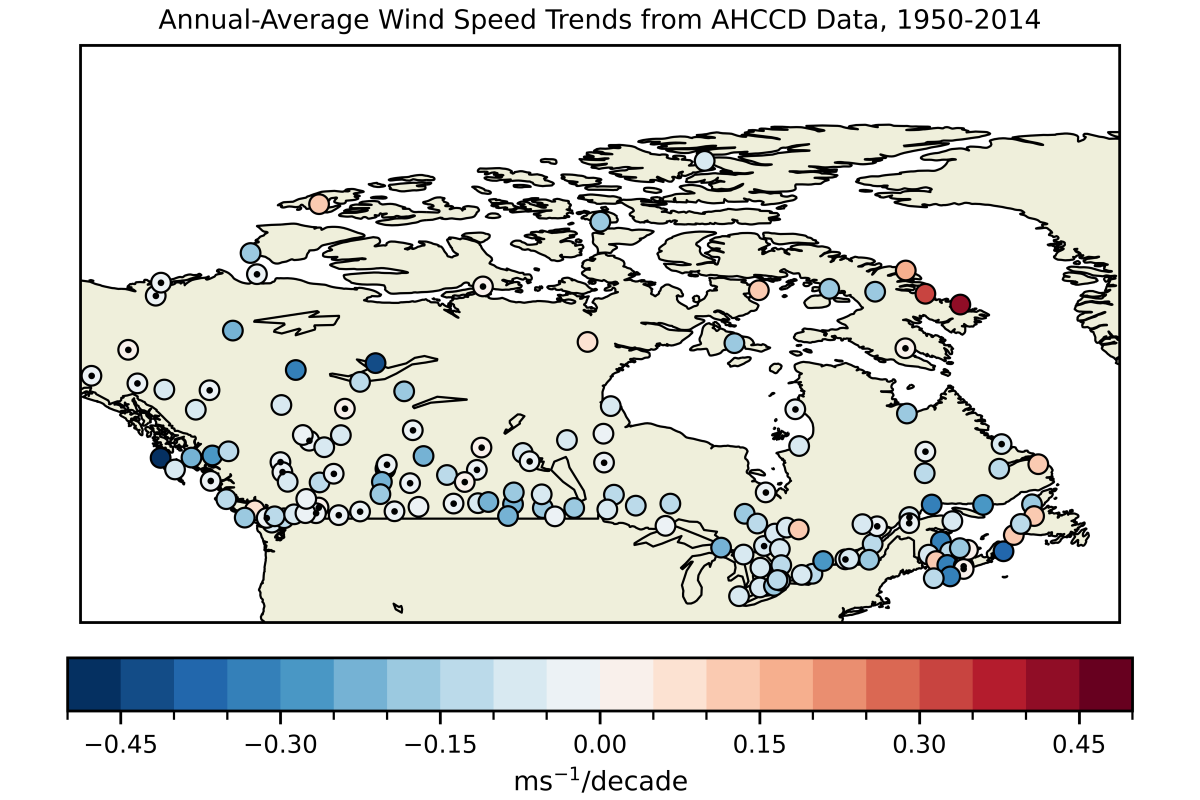References
[1] Sandink, D., Kopp, G., Stevenson, S., & Dale, N. (2019). Increasing High Wind Safety for Canadian Homes: A Foundational Document for Low-Rise Residential and Small Buildings (62; ICLR Research Paper Series, p. 128). Institute for Catastrophic Loss Reduction.
[2] Wang, X. L., Wan, H., & Swail, V. R. (2006). Observed Changes in Cyclone Activity in Canada and Their Relationships to Major Circulation Regimes. Journal of Climate, 19(6), 896–915. https://doi.org/10.1175/JCLI3664.1
[3] Priestley, M. D. K., & Catto, J. L. (2022). Future changes in the extratropical storm tracks and cyclone intensity, wind speed, and structure. Weather and Climate Dynamics, 3(1), 337–360. https://doi.org/10.5194/wcd-3-337-2022
[4] Booth, J. F., Wang, S., & Polvani, L. (2013). Midlatitude storms in a moister world: Lessons from idealized baroclinic life cycle experiments. Climate Dynamics, 41(3–4), 787–802. https://doi.org/10.1007/s00382-012-1472-3
[5] Sinclair, V. A., Rantanen, M., Haapanala, P., Räisänen, J., & Järvinen, H. (2020). The characteristics and structure of extra-tropical cyclones in a warmer climate. Weather and Climate Dynamics, 1(1), 1–25. https://doi.org/10.5194/wcd-1-1-2020
[6] Kar-Man Chang, E. (2018). CMIP5 Projected Change in Northern Hemisphere Winter Cyclones with Associated Extreme Winds. Journal of Climate, 31(16), 6527–6542. https://doi.org/10.1175/JCLI-D-17-0899.1
[7] Seiler, C., & Zwiers, F. W. (2016). How will climate change affect explosive cyclones in the extratropics of the Northern Hemisphere? Climate Dynamics, 46(11–12), 3633–3644. https://doi.org/10.1007/s00382-015-2791-y
[8] Prein, A. F. (2023). Thunderstorm straight line winds intensify with climate change. Nature Climate Change, 13(12), 1353–1359. https://doi.org/10.1038/s41558-023-01852-9
[9] Cheng, C. S., Lopes, E., Fu, C., & Huang, Z. (2014). Possible Impacts of Climate Change on Wind Gusts under Downscaled Future Climate Conditions: Updated for Canada. Journal of Climate, 27(3), 1255–1270. https://doi.org/10.1175/JCLI-D-13-00020.1
[10] Wan, H., Wang, X. L., & Swail, V. R. (2010). Homogenization and Trend Analysis of Canadian Near-Surface Wind Speeds. Journal of Climate, 23(5), 1209–1225. https://doi.org/10.1175/2009JCLI3200.1
[11] Vautard, R., Cattiaux, J., Yiou, P., Thépaut, J.-N., & Ciais, P. (2010). Northern Hemisphere atmospheric stilling partly attributed to an increase in surface roughness. Nature Geoscience, 3(11), 756–761. https://doi.org/10.1038/ngeo979
[12] Zeng, Z., Ziegler, A. D., Searchinger, T., Yang, L., Chen, A., Ju, K., Piao, S., Li, L. Z. X., Ciais, P., Chen, D., Liu, J., Azorin-Molina, C., Chappell, A., Medvigy, D., & Wood, E. F. (2019). A reversal in global terrestrial stilling and its implications for wind energy production. Nature Climate Change, 9(12), 979–985. https://doi.org/10.1038/s41558-019-0622-6
[13] Li, S., Irwin, P., Kilpatrick, J., Gibbons, M., & Valerie, S. (2017). A Review of Historical Extreme Wind Speeds in a Changing Climate At Some Major Canadian Cities. Leadership in Sustainable Infrastructure. CSCE Annual Conf. and Annual General Meeting, Montreal. https://legacy.csce.ca/elf/apps/CONFERENCEVIEWER/conferences/2017/pdfs/ENV/FinalPaper_850.pdf
[14] Leung, A. C. W., Gough, W. A., Butler, K. A., Mohsin, T., & Hewer, M. J. (2022). Characterizing observed surface wind speed in the Hudson Bay and Labrador regions of Canada from an aviation perspective. International Journal of Biometeorology, 66(2), 411–425. https://doi.org/10.1007/s00484-020-02021-9
[15] Hersbach, H., Bell, B., Berrisford, P., Hirahara, S., Horányi, A., Muñoz‐Sabater, J., Nicolas, J., Peubey, C., Radu, R., Schepers, D., Simmons, A., Soci, C., Abdalla, S., Abellan, X., Balsamo, G., Bechtold, P., Biavati, G., Bidlot, J., Bonavita, M., … Thépaut, J. (2020). The ERA5 global reanalysis. Quarterly Journal of the Royal Meteorological Society, 146(730), 1999–2049. https://doi.org/10.1002/qj.3803
[16] Gasset, N., Fortin, V., Dimitrijevic, M., Carrera, M., Bilodeau, B., Muncaster, R., Gaborit, É., Roy, G., Pentcheva, N., Bulat, M., Wang, X., Pavlovic, R., Lespinas, F., Khedhaouiria, D., & Mai, J. (2021). A 10 km North American precipitation and land-surface reanalysis based on the GEM atmospheric model. Hydrology and Earth System Sciences, 25(9), 4917–4945. https://doi.org/10.5194/hess-25-4917-2021
[17] Betts, A. K., Chan, D. Z., & Desjardins, R. L. (2019). Near-Surface Biases in ERA5 Over the Canadian Prairies. Frontiers in Environmental Science, 7, 129. https://doi.org/10.3389/fenvs.2019.00129
[18] Morris, M., Kushner, P. J., Moore, G. W. K., & Mercan, O. (2023). Atmospheric Circulation Patterns Associated with Extreme Wind Events in Canadian Cities. Journal of Climate, 36(13), 4443–4460. https://doi.org/10.1175/JCLI-D-22-0719.1
[19] Chen, T., Collet, F., & Di Luca, A. (2024). Evaluation of ERA5 precipitation and 10‐m wind speed associated with extratropical cyclones using station data over North America. International Journal of Climatology, 44(3), 729–747. https://doi.org/10.1002/joc.8339
[21] Jiaxiang, G., Shoshiro, M., Roberts, M. J., Haarsma, R., Putrasahan, D., Roberts, C. D., Scoccimarro, E., Terray, L., Vannière, B., & Vidale, P. L. (2020). Influence of model resolution on bomb cyclones revealed by HighResMIP-PRIMAVERA simulations. Environmental Research Letters, 15(8), 084001. https://doi.org/10.1088/1748-9326/ab88fa
[22] Seiler, C., Zwiers, F. W., Hodges, K. I., & Scinocca, J. F. (2018). How does dynamical downscaling affect model biases and future projections of explosive extratropical cyclones along North America’s Atlantic coast? Climate Dynamics, 50(1–2), 677–692. https://doi.org/10.1007/s00382-017-3634-9
[23] Pryor, S. C., Nikulin, G., & Jones, C. (2012). Influence of spatial resolution on regional climate model derived wind climates. Journal of Geophysical Research: Atmospheres, 117(D3), 2011JD016822. https://doi.org/10.1029/2011JD016822
[24] Cannon, A. J., Jeong, D. I., Zhang, X., & Zwiers, F. (2020). Climate-resilient buildings and core public infrastructure 2020: An assessment of the impact of climate change on climatic design data in Canada (En4-415/2020E-PDF). Environment and Climate Change Canada. publications.gc.ca/pub?id=9.893021&sl=0









